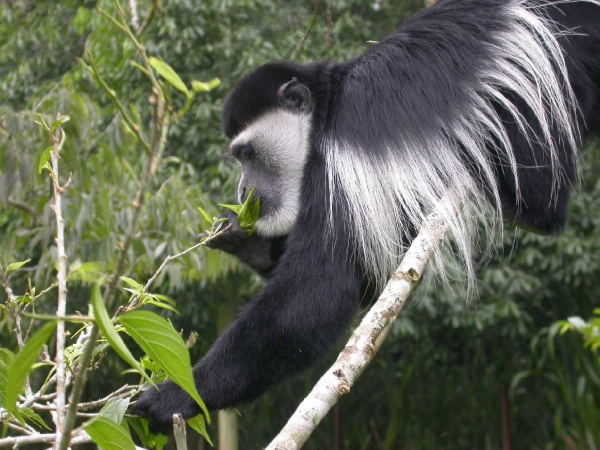Facts About Black-and-white colobus
Black-and-white colobus monkeys, belonging to the genus *Colobus*, are captivating creatures native to Africa. They are closely related to red colobus monkeys of the genus *Piliocolobus*. Within the *Colobus* genus, there are five distinct species and numerous subspecies. These monkeys thrive in dense forests, where their diet primarily consists of leaves, flowers, and fruits.
Colobus monkeys live in social groups with varied structures and behaviors. Some groups exhibit resident-egalitarian relationships, in which all members have equal status, and females often participate in allomothering, collectively caring for each other's young. Additionally, these monkeys engage in fascinating behaviors, including greeting rituals and distinctive sleeping patterns.
The name "colobus" derives from the Greek word "kolobós" meaning "docked" or "maimed" a reference to their small, stump-like thumbs. They exhibit remarkable adaptability and inhabit various forest types, including primary and secondary forests, riverine forests, and even wooded grasslands. Their diet is diverse, featuring leaves, fruits, flowers, lichen, herbaceous plants, and bark. This varied diet makes them essential for seed dispersal, thereby aiding in the maintenance of their ecosystems' health.
Colobus monkeys reside in territorial groups of varying sizes and structures. Adults are easily recognizable by their black fur and striking white markings, while newborns are completely white with pink faces. Their social behaviors are intricate, including greeting rituals and specific sleeping patterns. At night, these groups sleep in trees near food sources, which helps them conserve energy and avoid predators.
These monkeys face several threats, such as predation, hunting for bushmeat, logging, and habitat destruction. They remain vigilant and exhibit different behaviors based on the familiarity and frequency of threats. The species within the *Colobus* genus include the black colobus, Angola colobus, king colobus, ursine colobus, and mantled guereza. Each species plays a crucial role in their habitat, particularly in seed dispersal, which is vital for the ecosystem's overall health.

 Rwanda
Rwanda